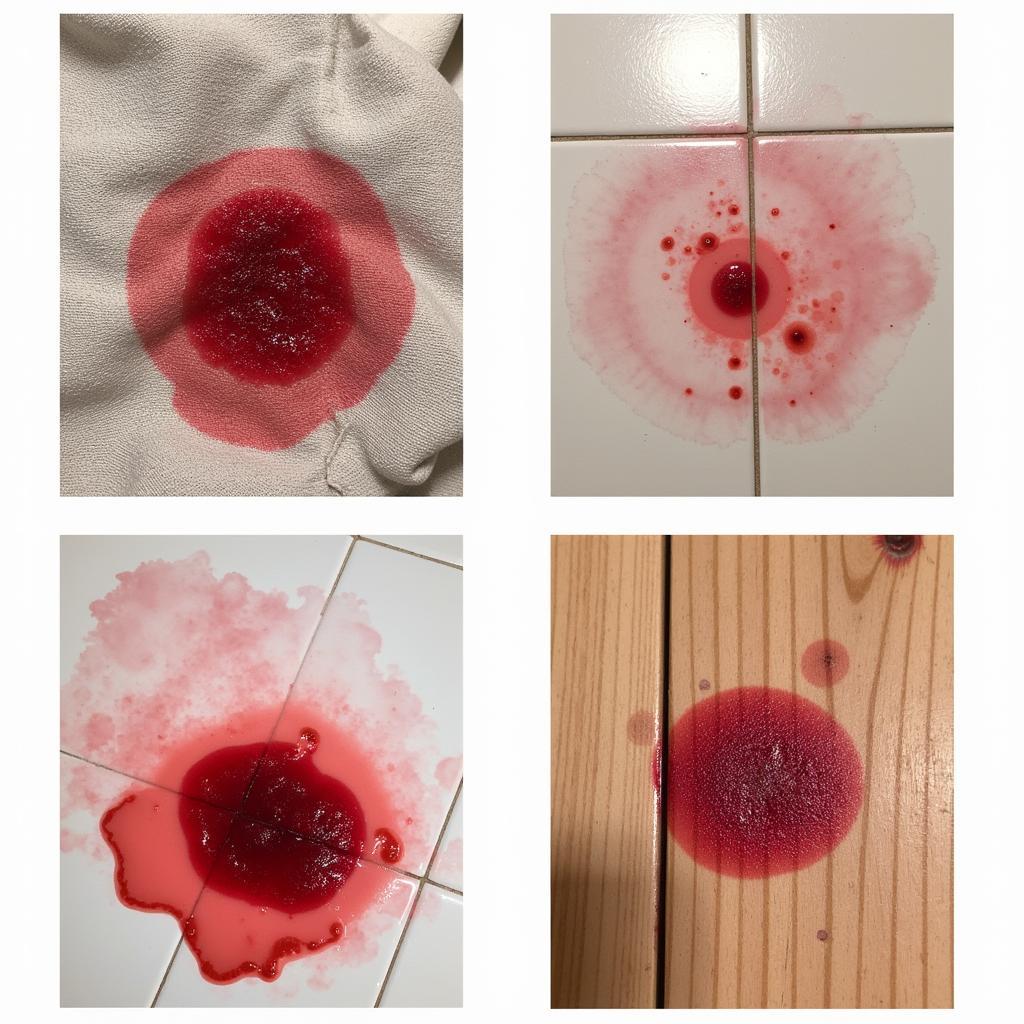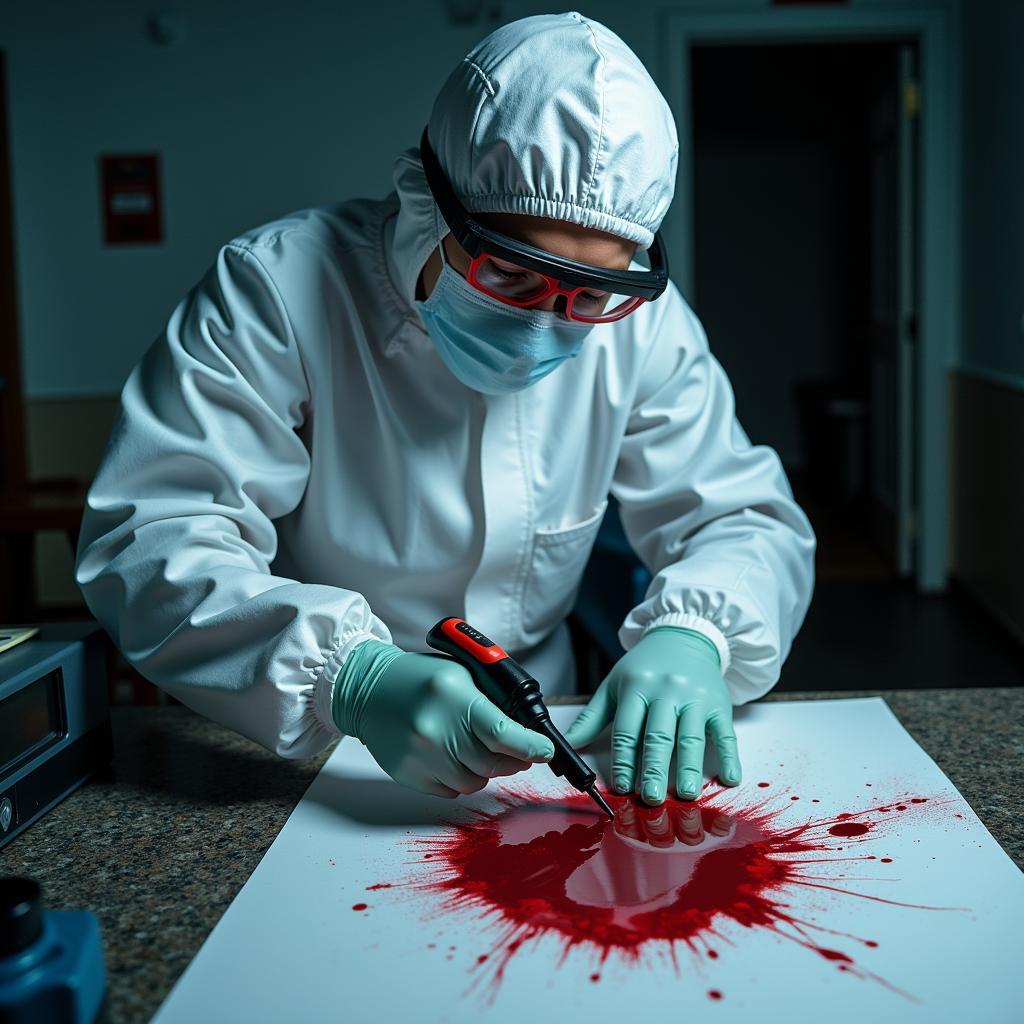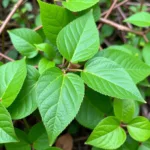Have you ever wondered what color does blood turn when it dries? We’ve all seen it – that ominous brownish stain that appears after a cut or scrape has healed. It’s a far cry from the bright, vibrant red we associate with fresh blood. Why the dramatic color change? Let’s delve into the fascinating science behind the drying process of blood.
The Chemistry Behind the Color Change of Dried Blood
The transformation from crimson to brown is a result of oxidation, a chemical reaction involving hemoglobin, the iron-containing protein in red blood cells responsible for carrying oxygen throughout the body. When blood is exposed to air, the iron in hemoglobin reacts with oxygen, forming methemoglobin. Methemoglobin has a brownish hue, which is why dried blood appears darker and less vibrant than fresh blood. This process is similar to rusting, where iron reacts with oxygen to form iron oxide, the reddish-brown substance we commonly see on metal.
Factors Influencing the Color of Dried Blood
While the basic principle of oxidation remains constant, several factors can influence the precise shade of dried blood, ranging from dark brown to almost black, even a reddish-brown.
- Surface: The material the blood dries on plays a significant role. Porous surfaces like fabric absorb the blood, spreading it out and allowing for more exposure to oxygen, leading to a faster and more complete oxidation process. This often results in a darker brown color. On non-porous surfaces like tile or glass, the blood pools and dries more slowly, potentially retaining some of its reddish hue.
- Quantity of Blood: A larger volume of blood will naturally take longer to dry, leading to a more layered and complex oxidation process. This can result in varying shades within the stain, with the outer edges appearing darker and the center potentially retaining some reddish-brown tones.
- Environmental Factors: Temperature and humidity also influence the drying process. Higher temperatures accelerate drying and oxidation, while high humidity can slow it down.
- Exposure to Light: Prolonged exposure to sunlight can further darken dried blood due to the breakdown of pigments.
 Dried Blood on Various Surfaces
Dried Blood on Various Surfaces
Why is Understanding the Color of Dried Blood Important?
Knowing what color does blood dry can be surprisingly useful in various fields, particularly in forensic science. The color and pattern of bloodstains can provide crucial clues in criminal investigations, helping investigators reconstruct crime scenes and determine the sequence of events.
Forensic Applications of Bloodstain Analysis
Forensic scientists use the color of dried blood, along with other characteristics like shape and size, to determine:
- The Time Elapsed Since Bleeding: While not an exact science, the color change can provide a rough estimate of how long ago the bleeding occurred. Fresh blood is bright red, while older, dried blood is typically dark brown or black.
- The Source of the Blood: Analyzing the blood’s composition can sometimes indicate whether it’s human or animal blood.
- The Type of Weapon Used: The pattern of blood spatter can help determine the type of weapon used in a crime, whether it was a blunt object, a sharp instrument, or a firearm.
 Forensic Bloodstain Analysis
Forensic Bloodstain Analysis
What Color Does Blood Dry: Common Misconceptions
There are a few common misconceptions about the color of dried blood that are worth addressing:
- Myth: Dried blood is always black. Reality: While dried blood can appear very dark brown, it’s not always black. The shade can vary depending on the factors mentioned earlier.
- Myth: The color of dried blood can determine blood type. Reality: Blood type cannot be determined solely by the color of dried blood. Specialized laboratory tests are required to determine blood type.
Conclusion: Unraveling the Mystery of Dried Blood
Understanding what color does blood turn when it dries goes beyond mere curiosity. It unveils the fascinating interplay of chemistry and biology, and it has practical applications in fields like forensic science. From the initial bright red to the final brownish hue, the color change of blood tells a story of oxidation and reveals clues about the circumstances surrounding its presence. So, the next time you see a dried bloodstain, take a moment to appreciate the intricate science behind its color. If you need assistance with any color-related questions or want to explore how color can transform your living spaces, feel free to contact us. What color does blood dry? We have the answers.
FAQ
- Why does blood change color when it dries? The iron in hemoglobin reacts with oxygen, forming methemoglobin, which has a brownish hue.
- Can the color of dried blood tell you how old the stain is? It can give a rough estimate, but not an exact time.
- Is dried blood always black? No, it can range from dark brown to almost black, even reddish-brown.
- Can you tell blood type from the color of dried blood? No, specialized tests are needed to determine blood type.
- How is the color of dried blood used in forensics? It helps determine the time since bleeding, the source of the blood, and sometimes the type of weapon used.
- What factors influence the color of dried blood? Surface, quantity of blood, environmental factors, and light exposure.
- What is methemoglobin? It’s a form of hemoglobin formed when iron reacts with oxygen, giving dried blood its brownish color.
For more information on how color affects our perception and how you can use color to create stunning interiors, visit what color does blood dry.
Need professional advice on color palettes and paint solutions? Contact us at:
Phone: 0373298888
Email: [email protected]
Address: 86 Cầu Giấy, Hà Nội.
We have a 24/7 customer service team. what color does blood dry might also provide more insight.
We have more helpful resources available on our website, including articles about various aspects of color theory and application. Learn more by exploring what color does blood dry.
